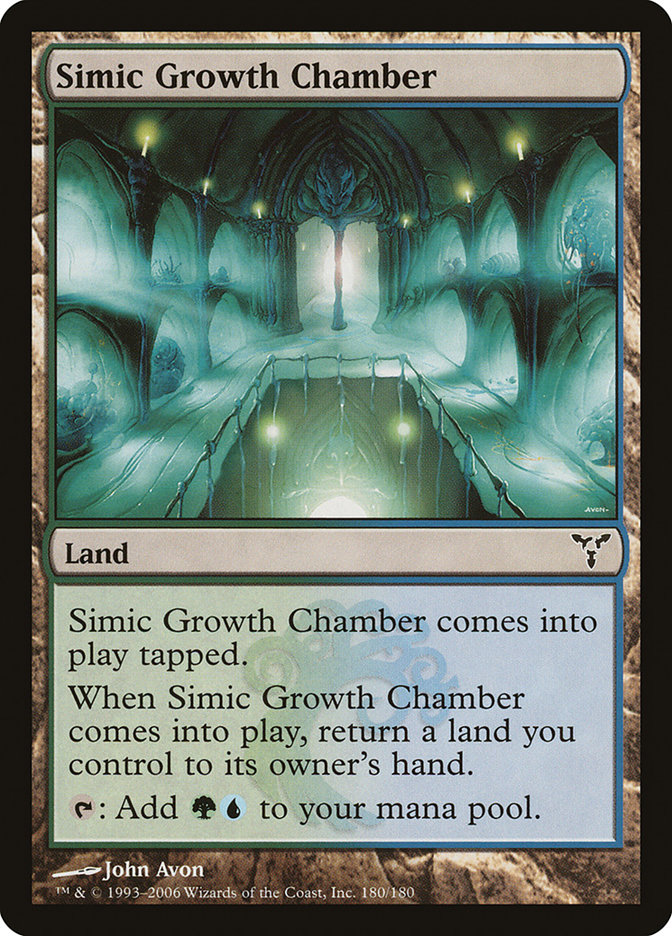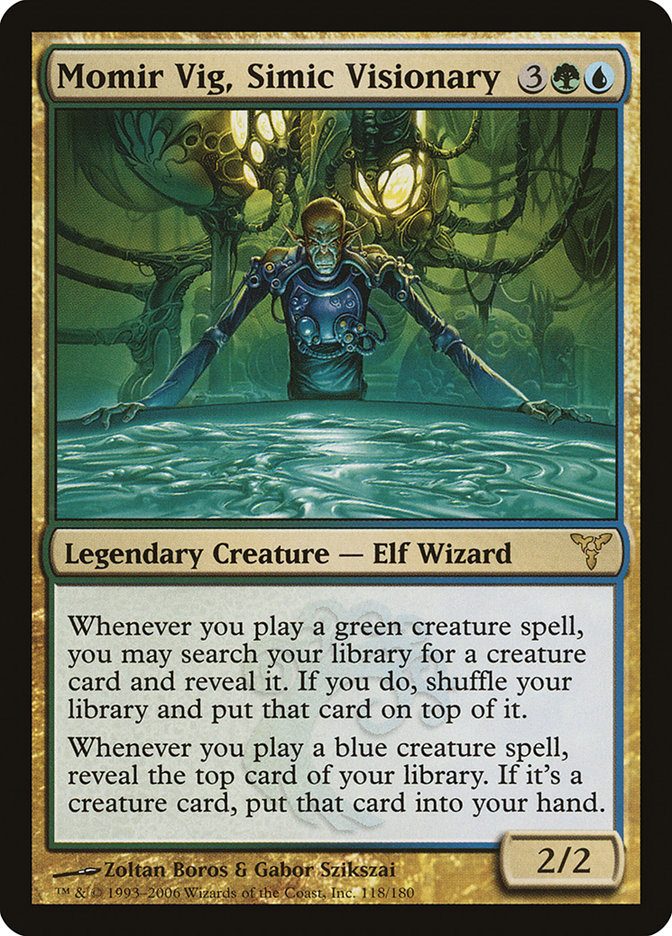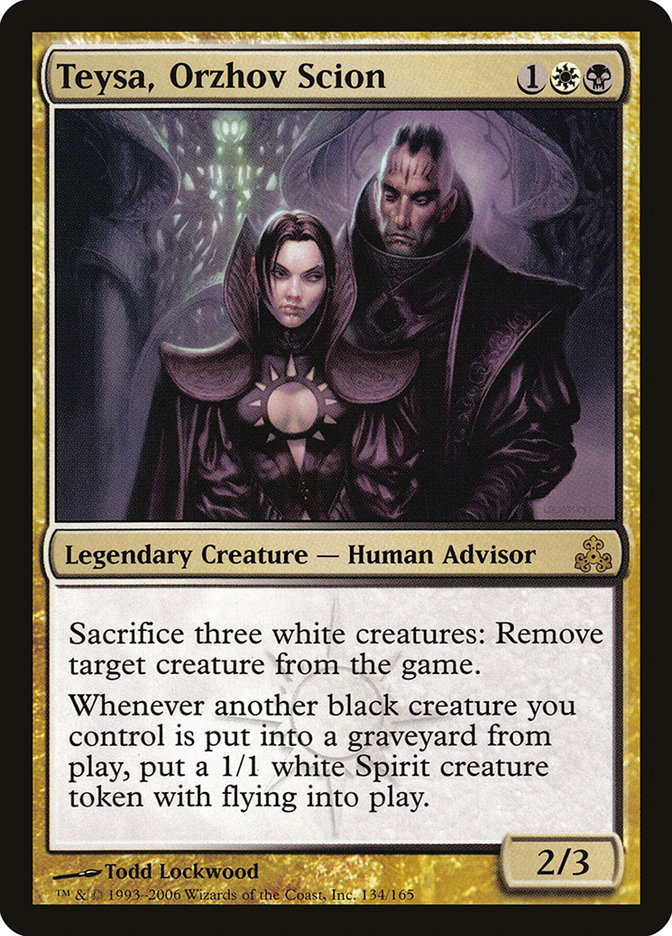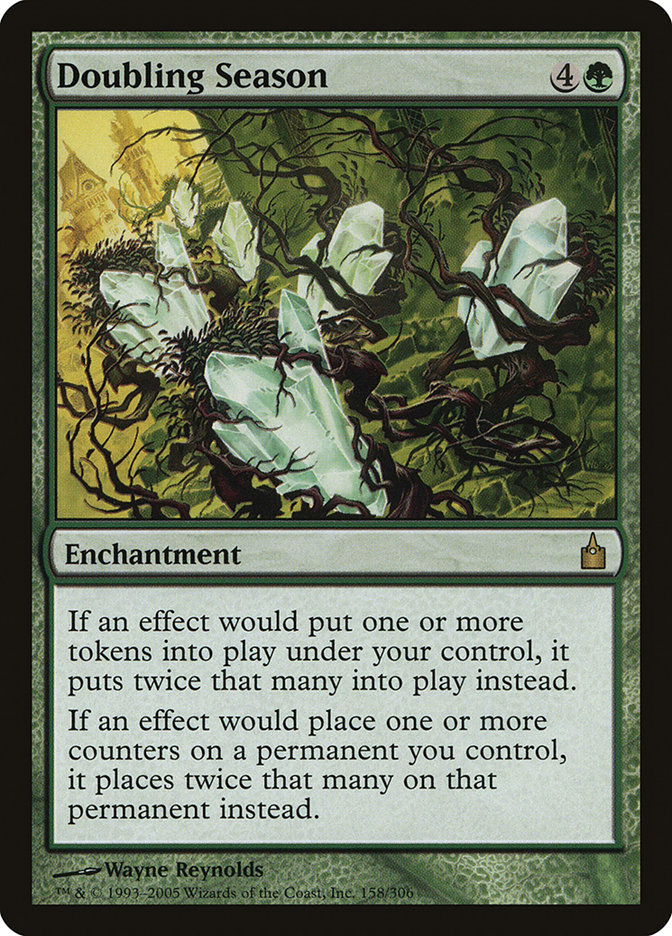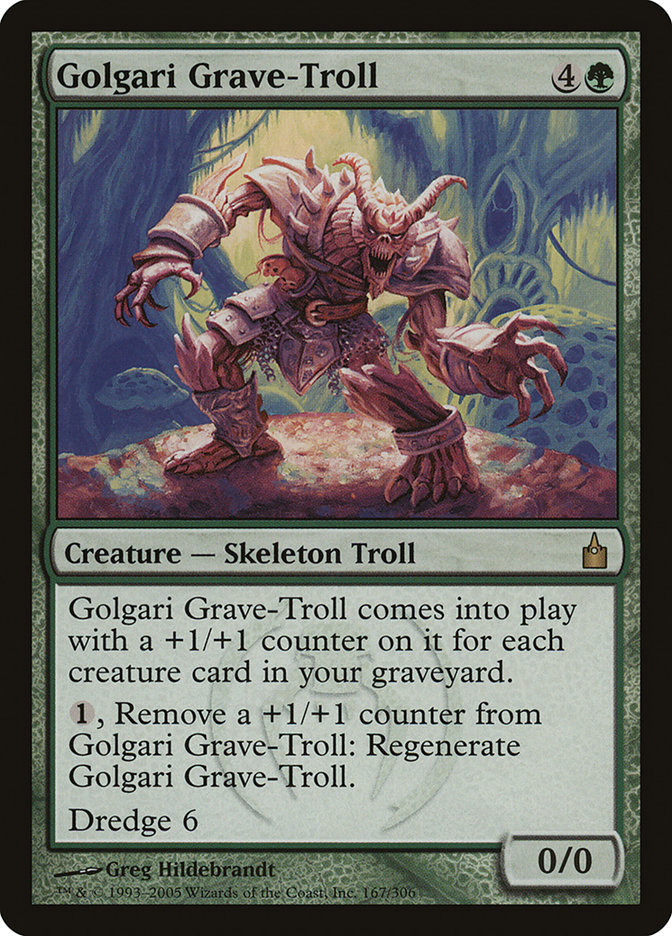Commander used to be a casual format that a small community of people played that could be ignored as a passing fad. Other than jumping the prices of quarter rares to five dollars, it had the stigma of being a format without any redeeming values that belonged in the backs of tournament halls or scattered around kitchen tables and left to the Timmys of the Magic world. The belief that Commander is an obscure format was slowly etched away as more and more articles and video content was produced to show the amazing things that happen when 100-card singleton decks are slammed against one another in pure chaos. On just the front page of this website you can find a Commander article every day and Commander videos every other week proudly displayed alongside the other formats established by Wizards of the Coast.
When the Commander product was released in June of 2011, it not only brought new wedge-colored legends but also validation to the Commander format. No other player-created format has received this type of push in the history of Magic, and it deserves to be recognized as an actual determining force in the game. The Commander product brought amazing generals and a ringing endorsement from the creators of Magic and looks to vault into the Top 4 over the multicolored Ravnica block.
The immensity of Ravnica block’s contribution to all of Magic is hard to sum up because its impact is still being felt today. The amazing Limited format that spawned from Ravnica, Guildpact, and Dissension is one of the most popular drafting sets of all time due to its complexity, and players were finally rewarded for their greed in the land of 40 cards. The Ravnica Standard format was a welcome change from the Affinity dominated one, with decks like Ghazi Glare and multicolored control decks beginning their rise to prominence. Even in Eternal formats like Modern and Legacy, Ravnica block lands and spells are constantly called upon to create new and interesting deck ideas.
Ravnica block established the flavor of each of the color pairs in Magic with their innovative guild system placing a Ravnica guild moniker on any dual-colored deck to pop up in the last ten years. Commander has also received some gifts from the city of guilds, including an expanded mana base and some great legends to build decks around. Today Ravnica block looks to beat down the surging Commander product for a spot in the Top 4 and a possible finals matchup with Return to Ravnica block.
This article is the last of the Top 8, so let’s see how the Top 4 is shaping up!
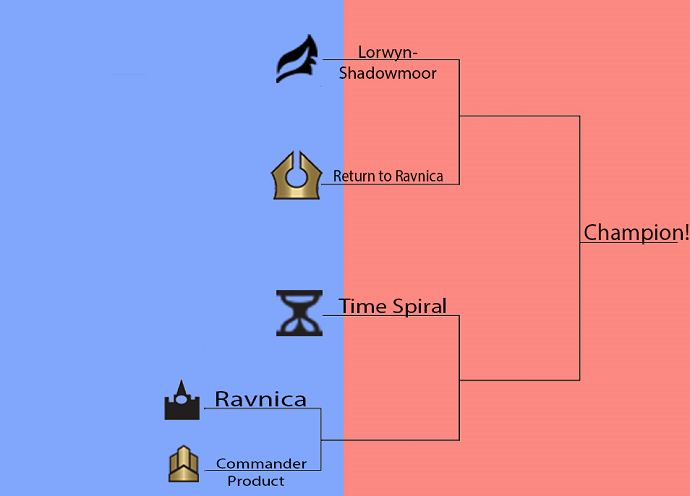
Remember, these battles are to decide which block contributed the most to Commander, not the best block in all of Magic. They will be compared in the usual five categories: Staples, Commanders, Strategies, Flavor, and The Bad.
Staples
Five Notable Staples From Ravnica Block
1) Shock Lands
2) Signets
3) Condemn
4) Karoo Lands
5) Angel of Despair
Now that the Top 8 is coming to a close and the margin between which block wins and loses begins to shrink, it’s time to knuckle down and be extremely critical of the faults that are present in each of these blocks. In each of Ravnica block’s battles so far, the Staples section has boiled down to the guilds traipsing down the yellow brick road singing, "Shock lands and Signets and Karoo lands, oh my!" Their prevalence in the format is based on the fact that one of the only ways nongreen decks have to fight back against players spamming Cultivate and Kodama’s Reach is to keep mana parity with Signets and Karoo lands. This is the best mana fixing that any block has brought to the format and is what Ravnica has hinged its offense on.
Once we get beyond the mana fixing, it gets really sketchy. Angel of Despair sees a fair amount of play in the format because of its heavy use in reanimation- and flicker-based strategies, but calling it a staple is a little bit of a stretch. Even Condemn, a card that bottoms opposing commanders, has seen a decrease in play recently. The drop off for Ravnica block is rather steep as it hits Doubling Season and a trio of removal in Mortify, Putrefy, and Faith’s Fetters at 6-9 and plummets into a free fall of cute spells that see moderate to light play in the Commander format. Ravnica’s contribution to the format in this section is very top heavy but still substantial enough to warrant its current place in the competition.
Five Notable Staples From Commander Product
1) Command Tower
2) Spell Crumple
3) Scavenging Ooze
4) Chaos Warp
5) Angel of Finality
The definition of a staple is a card that goes in every deck, and Command Tower is the embodiment of that principle. Command Tower’s commander-first design led to its quick inclusion in every non-monocolor deck in the format. Spell Crumple is the "Cancel that could" and sees heavy play in Commander as a decent defensive spell against opponents’ must-answer threats and morphs into an offensive card against decks running general-focused strategies.
Even if it’s just a Bojuka Bog with wings, Angel of Finality has earned its place amongst white decks as an easily repeatable graveyard-recursion preventer that belongs in any creature-based toolbox or blink deck. Just like Ravnica block, the drop off after these five cards is immense. Slots 6 through 9 are populated by untested cards like Primal Vigor and Tempt with Discovery that are slowly coming into their own but don’t come close to belonging on this list.
Verdict: Ravnica block once again runs away with this section as it dominates the Commander product with a truckload of mana fixing and some solid removal.
Commanders
Not all Ravnica legends are created equal. Out of the ten guild masters and ten guild champions, six see moderate to heavy play in Commander, with the rest rarely seeing the outside of a 500-count cardboard box. Legendary Dragon Wizard Niv-Mizzet, the Firemind is the most popular of the original Ravnica legends due to its flashy combo finishes and how well it plays with the Izzet’s love of drawing cards. Momir Vig, Simic Visionary is another Wizard of note from Ravnica block that enjoys drawing cards, but this time when playing green and blue creatures. Whether it’s Coiling Oracle or Prophet of Kruphix, the pain train never stops when a Momir Vig, Simic Visionary stays on the board, earning him the distinction of being a kill-on-sight general.
Both Savra, Queen of the Golgari and Teysa, Orzhov Scion have seen repeated usage in Commander as sacrifice-based generals that come with a slight twist. Teysa, Orzhov Scion is usually a W/B Tokens deck that takes advantage of cards like Martyr’s Bond to lock opponents out of keeping creatures on the board or using Darkest Hour to have an unkillable mass of tokens as long as Teysa remains on the battlefield. Savra, Queen of the Golgari has multiple optimal builds, but the coolest is the slimy yet satisfying Saproling deck that uses the built-in sacrifice outlets of the Fungus tribe to keep opponents without creatures.
The commanders of the Commander product are on an unparalleled level when it comes to legendary creatures. Out of the 25 generals contained in these preconstructed decks, only three—Basandra, Battle Seraph; Tariel, Reckoner of Souls; and Vish Kal, Blood Arbiter—see light play in the format. The other 23 legendary creatures printed in this product see moderate to heavy play in Commander! That’s a staggering number of legendary creatures that see heavy play and is the greatest contribution in this section for any of the blocks in this competition.
Each of the wedge generals of the 2011 product were super important in fleshing out how these colors could be played in Commander by giving distinct strategies to utilize in deckbuilding and in game. The 2013 product expanded the reach of shard-colored commanders, providing new avenues for Commander players to explore within an already well-worn territory.
Verdict: The Commander product sweeps away Ravnica block in this section.
Strategies
The Commander format has always celebrated the wacky side of Magic, and decks that focus on doing things beyond the mundane have the Izzet to thank for cards like Eye of the Storm and Commander darling Warp World. The Simic brought some great +1/+1 counter-centered cards to Commander, with Doubling Season, Novijen Sages, Cytoplast Manipulator, and the graft mechanic in general being solid inclusions in any deck that wants to win the game with their Crown Royal dice bag.
The dredge mechanic from the Golgari guild is just as important in Commander as it is in Legacy for people that want to dump their library into their graveyard and pull out a win from six feet under. Golgari Grave-Troll and Stinkweed Imp are the usual offenders when dredge is involved, but Life form the Loam often sneaks in as an alternate card-advantage engine for decks that look to the discard pile for victories.
The Commander product excelled in the previous section with its fantastically designed legendary creatures, but the preconstructed decks falter when it comes to the other 99. One of the downfalls of the Commander product is that as preconstructed decks in this competition the massive amount of reprints cannot be counted towards its contribution to the format. Even if the reprinting of cards from Portal: Three Kingdoms in the Commander 2013 product was the first time players could touch these cards without spending an arm and a leg, it’s still a reprint.
Not including the legendary creatures, the Commander product brought an additional 77 new cards for Eternal formats to experiment with. The newly minted Primal Vigor accompanies cards like Tempt with Glory and Alliance of Arms as great token-making and +1/+1 counter-giving cards. The Vows from Commander 2011 are also incredibly useful in any Aura-based deck that wants their enchantments to work both offensively and defensively.
Verdict: The large amount of reprints in the Commander product hurt its ability to print enough new nonlegendary cards for people to brew new strategies around or supplement old strategies with. Ravnica block takes this section with a greater amount of supplemental cards for common strategies in Commander.
Flavor
Akin to its little brother Return to Ravnica, Ravnica block steps away from a defined story and instead focuses on establishing distinct themes for the color pairs. The mechanics in the original Ravnica block do a great job in evoking the themes of their representative guilds. The haunt mechanic perfectly matches the ghostly Orzhov guild, dredge is a perfect match for the color pair that loves bringing things back from the graveyard, and bloodthirst fits thematically with the relentless aggression of the Gruul guild.
Even the cards within Ravnica block do a fantastic job of establishing block themes, with cards like Invoke the Firemind and Niv-Mizzet, the Firemind cementing the red and blue color pair around drawing cards and dealing damage. The same fault from Return to Ravnica block presents itself here where the story taking place rarely presents itself into the block. But this lack of story is mitigated by spells that take the player inside the city of guilds to get lost amongst the city streets and sprawling skyscrapers of Ravnica.
The Commander product comes into this section at a slight disadvantage, as there’s no story going on in this product so its flavor is muted when it comes to Commander. The Commander product lacks a defining theme to tie the cards themselves too, so in place of making a new plane for just this single product the design team decided to attach the cards from the Commander product to planes we’ve visited before like Zendikar, Innistrad, and Ravnica. These callbacks to previous planes created such awesomely flavorful cards as Witch Hunt and the cycle of Curses that this design decision should be considered a success.
Verdict: Ravnica’s guild focus was well spent in creating a new identity for players to bond to when it comes to the color pairs of Magic. The Commander product also succeeded at creating small vignettes of planes we’ve visited before with interesting card designs based on older mechanics. Ravnica’s guild building wins this round through its greater execution at creating these color identities.
The Bad
The only falter from Ravnica block is the banned Protean Hulk, who just like in Legacy and Modern would lead to a two-card combo and was immediately banned because of it. The Commander product has escaped negative critique thus far, but new general Derevi, Imperial Tactician and older Simic legend Edric, Spymaster of Trest have caused quite a stir in the Commander community. Edric, Spymaster of Trest was declared too strong for the 1v1 focused French Commander, and Derevi, even with its short amount of time in Commander circles, has already received a large backlash of negative criticism for its ability to lock out the game with an easy-to-assemble Stasis lock.
Verdict: Although there are some cards on the radar for the Commander product, it’s still not nearly as destructive as Protean Hulk. Ravnica takes this section as well.
Final Verdict
As the Top 8 of the Battle of the Blocks comes to a close, the requirements to be called a truly great block for Commander has been increased. The grades have been adjusted for a harsher grading scale and can be seen below in this handy report card:
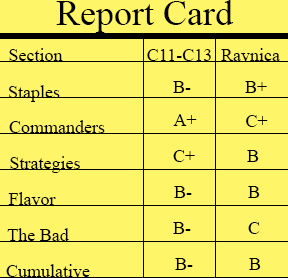
The true story here is that the Commander product’s extremely small card pool couldn’t catch up with the larger card pool of Ravnica and was beaten in sections that require a diverse mix of cards to get a good grade. Even though the Commander product gifted the format with the greatest boon of quality legends for the format, the rest of the cards were found lacking, and Ravnica block barely skated by in the face of tougher criticism.
Ravnica wins this battle to advance to a fantastic Top 4 along with Return to Ravnica, Time Spiral, and Lorwyn-Shadowmoor! There are three battles left to decide which block contributed the most to Commander, and as the judging becomes harsher, the smallest of mistakes can bump a block out of the competition. Join me next week as we delve into the interesting Lorwyn-Shadowmoor block versus Return to Ravnica block battle!

